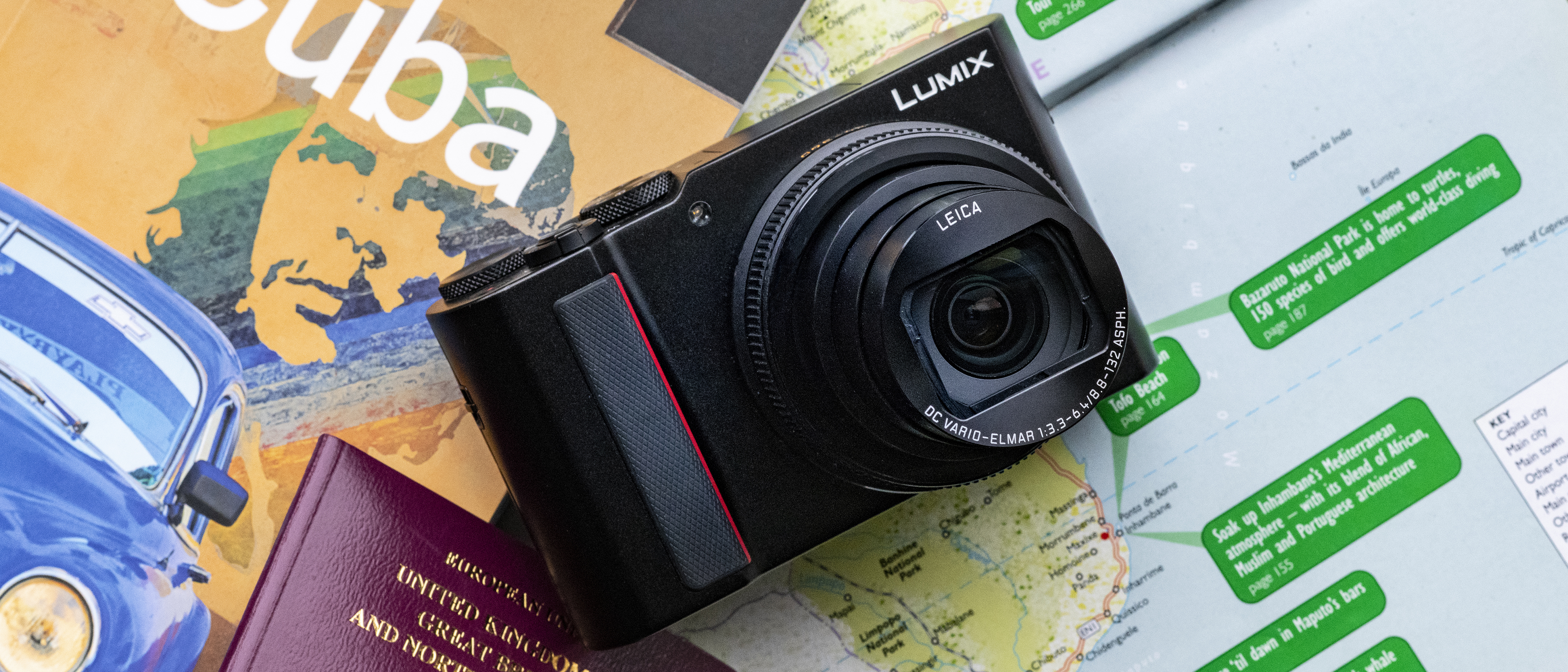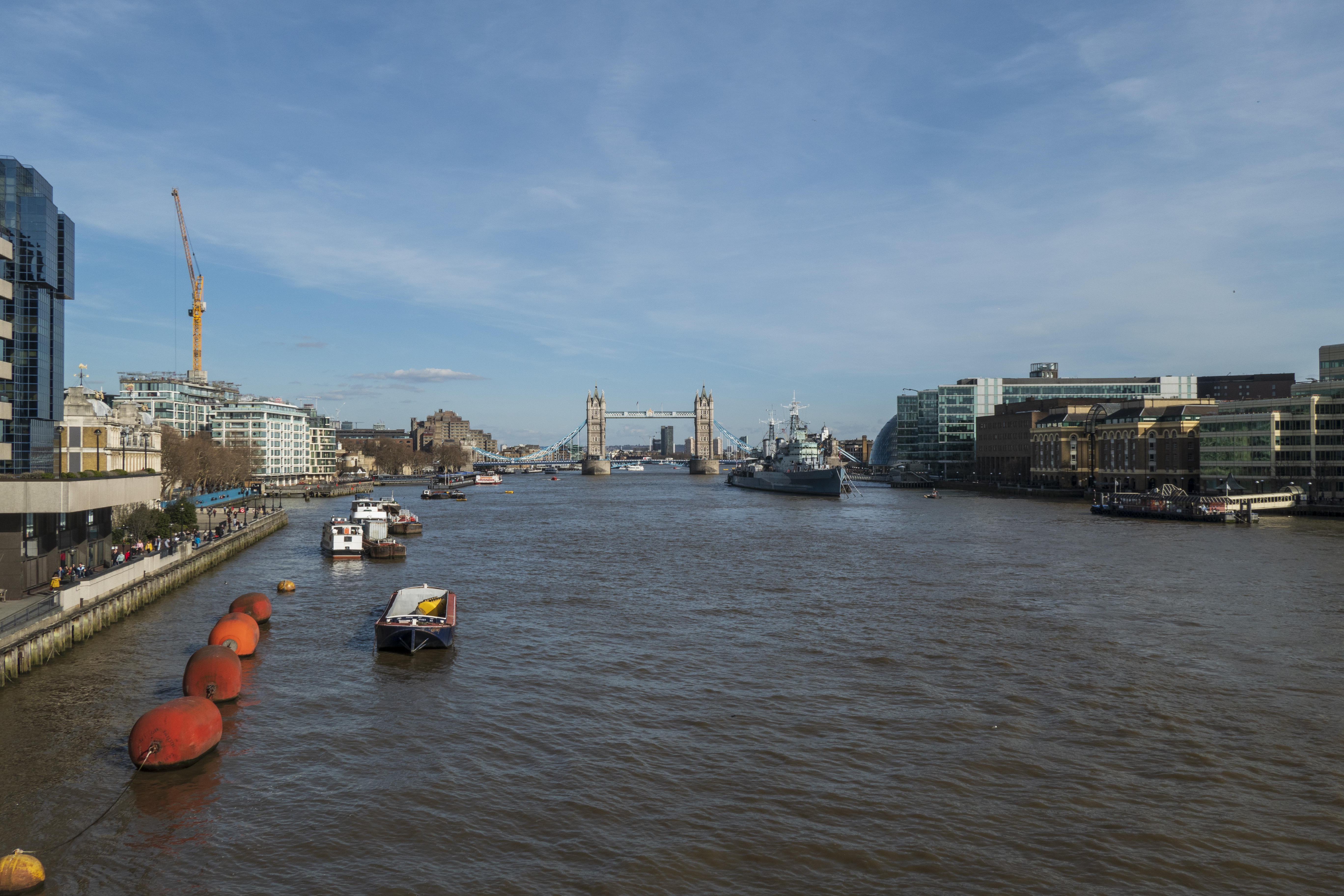TechRadar Verdict
If you're looking for a brilliant all-in-one travel compact camera that offers a excellent zoom range and great image quality, this is it.
Pros
- +
15x optical zoom range
- +
Large 1.0-inch sensor
- +
Touchscreen control
- +
4K video and photo modes
- +
Built-in EVF
- +
Wi-Fi and Bluetooth connectivity
- +
Manual control
Cons
- -
EVF still feels pretty cramped
- -
Image smoothing at high ISOs
- -
Expensive
Why you can trust TechRadar
The Essential Review
This is TechRadar’s review summary that gives you all the key information you need if you’re looking for quick buying advice in 30 seconds – our usual full, in-depth review follows.
What separates the Panasonic Lumix ZS200 (known as the Lumix TZ200 outside of the US, except in Australia where it's called the Lumix TZ220) from other travel zoom compacts that cost half the price is the sensor at the heart of the camera.
One of the best cameras for beginners, this is a 1.0-inch sensor with a resolution of 20.1MP, and that surface area is about four times the size of the sensors in most other travel zoom compacts. This means image quality is much better, with much greater detail.
It's not the first time we've seen a 1.0-inch sensor in a travel zoom compact – that accolade goes to the Lumix ZS100 / TZ100, but whereas that camera sported a pretty modest (for a travel zoom camera) 10x zoom range, the Lumix ZS200 / TZ200 sees Panasonic squeeze a 15x zoom into a similar sized body. The 24-360mm range makes the Lumix ZS200 / TZ200 incredibly versatile, suited to capturing everything from sweeping vistas to tightly cropped details.
There's a large 3.0-inch touchscreen on the rear of the camera (although it sits flush with the body and can't be angled outwards), while the Lumix ZS200 / TZ200 follows on from the Lumix ZS100 / TZ100 and sports a built-in electronic viewfinder (EVF); this gets a small bump up in resolution over its predecessor, but it still feels pretty small and claustrophobic to look through, so while it's handy for composing shots in bright sunlight, the rest of the time you'll find yourself using the excellent rear display.
For hassle-free photography there's a range of auto modes and features, but the Lumix ZS200 / TZ200 also features more advanced controls too, including aperture priority and shutter priority modes, as well as full manual control. There's also raw capture to help achieve the best quality results from your images, while the handy control wheel round the lens offers quick adjustment for a range of settings.
If you want to capture videos on your travels the Lumix ZS200 / TZ200 features 4K capture up to 30p, while Panasonic's 4K PHOTO mode lets users extract single still frames from 4K burst files shot at 30fps before saving them as 8MP-equivalent images.
It's the most expensive compact camera out there right now, but there's no other camera out there that offers a 15x optical zoom and 1.0-inch sensor in a compact body, making it one of the best travel cameras you can buy right now.
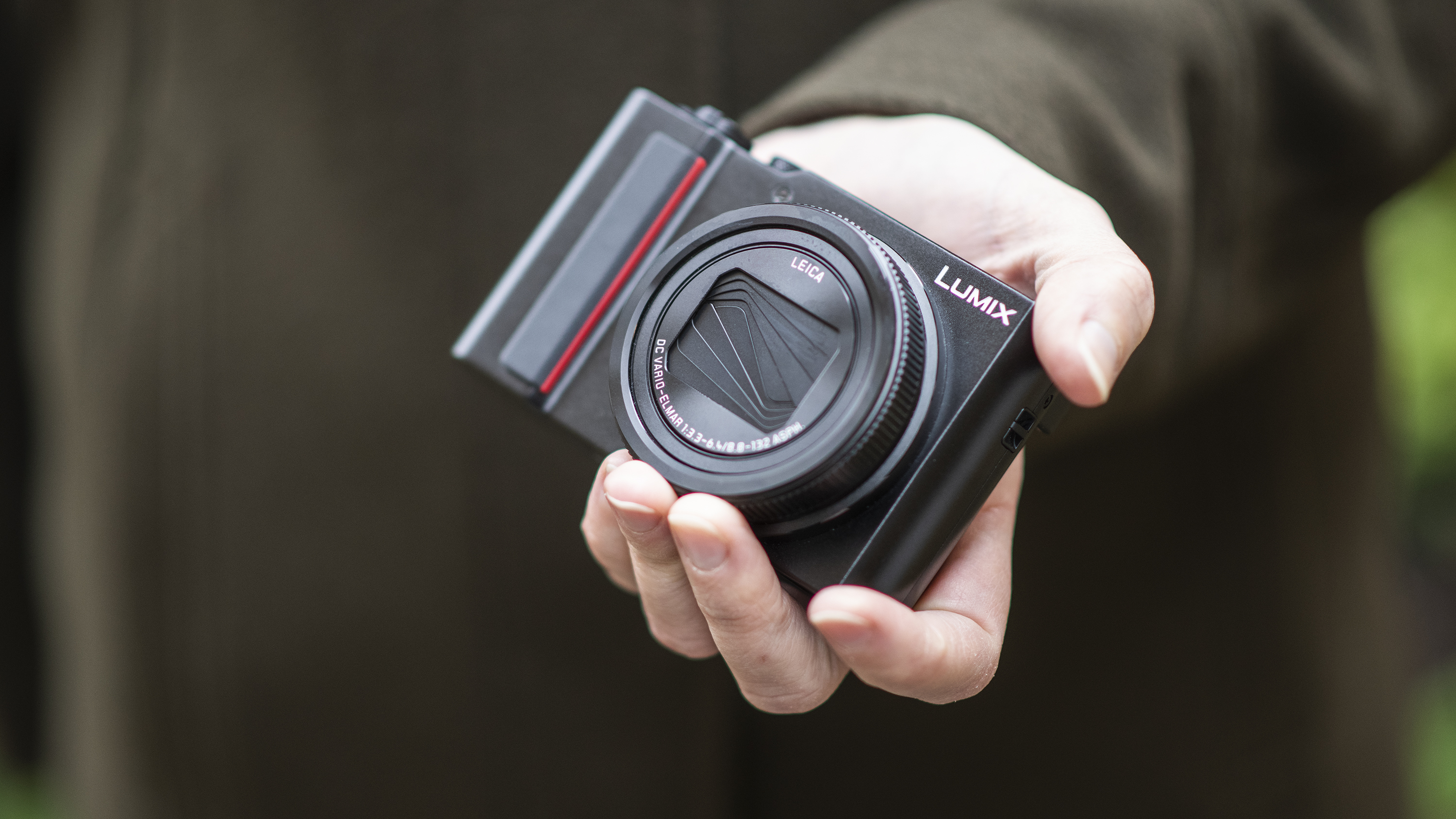

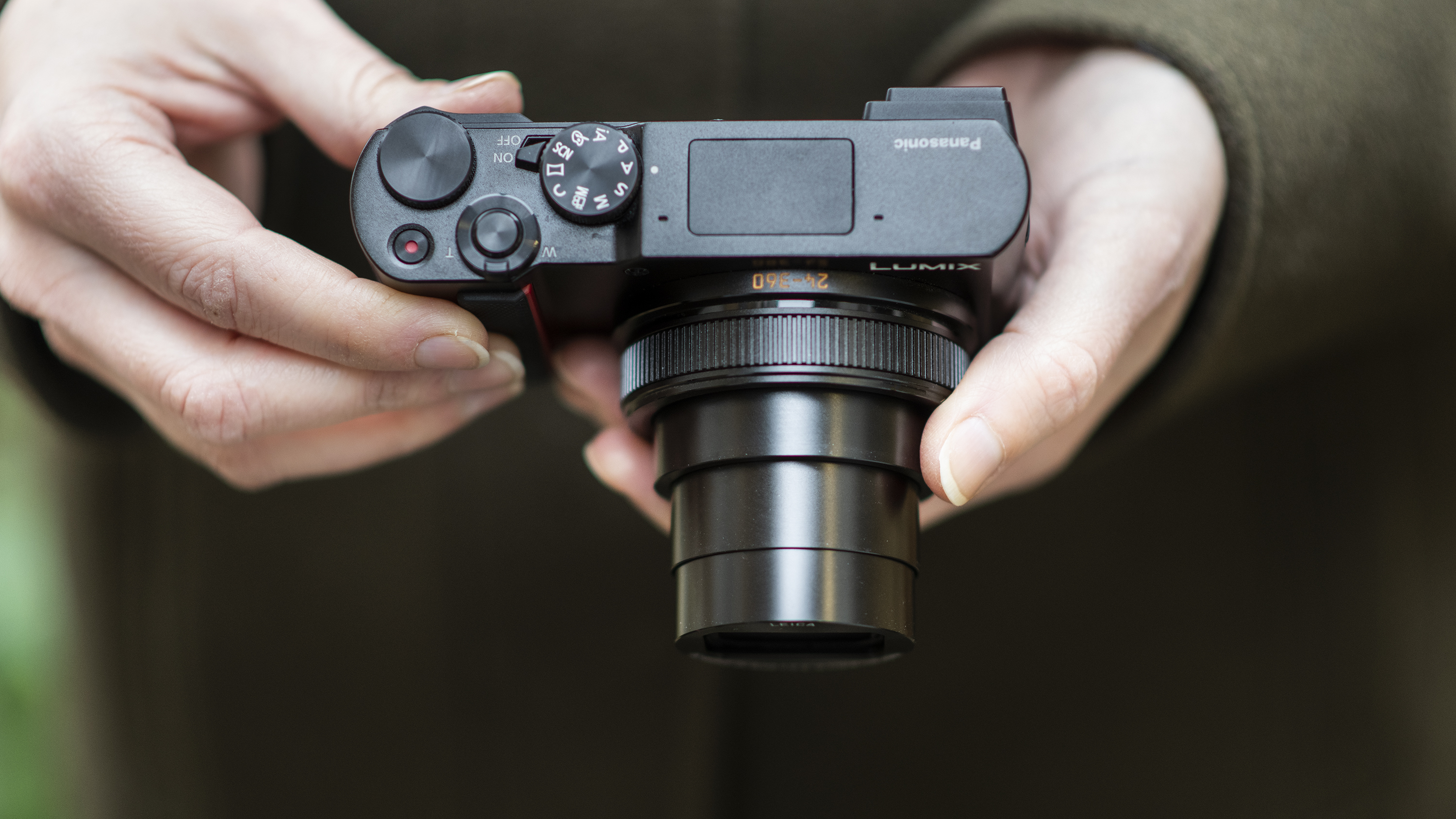
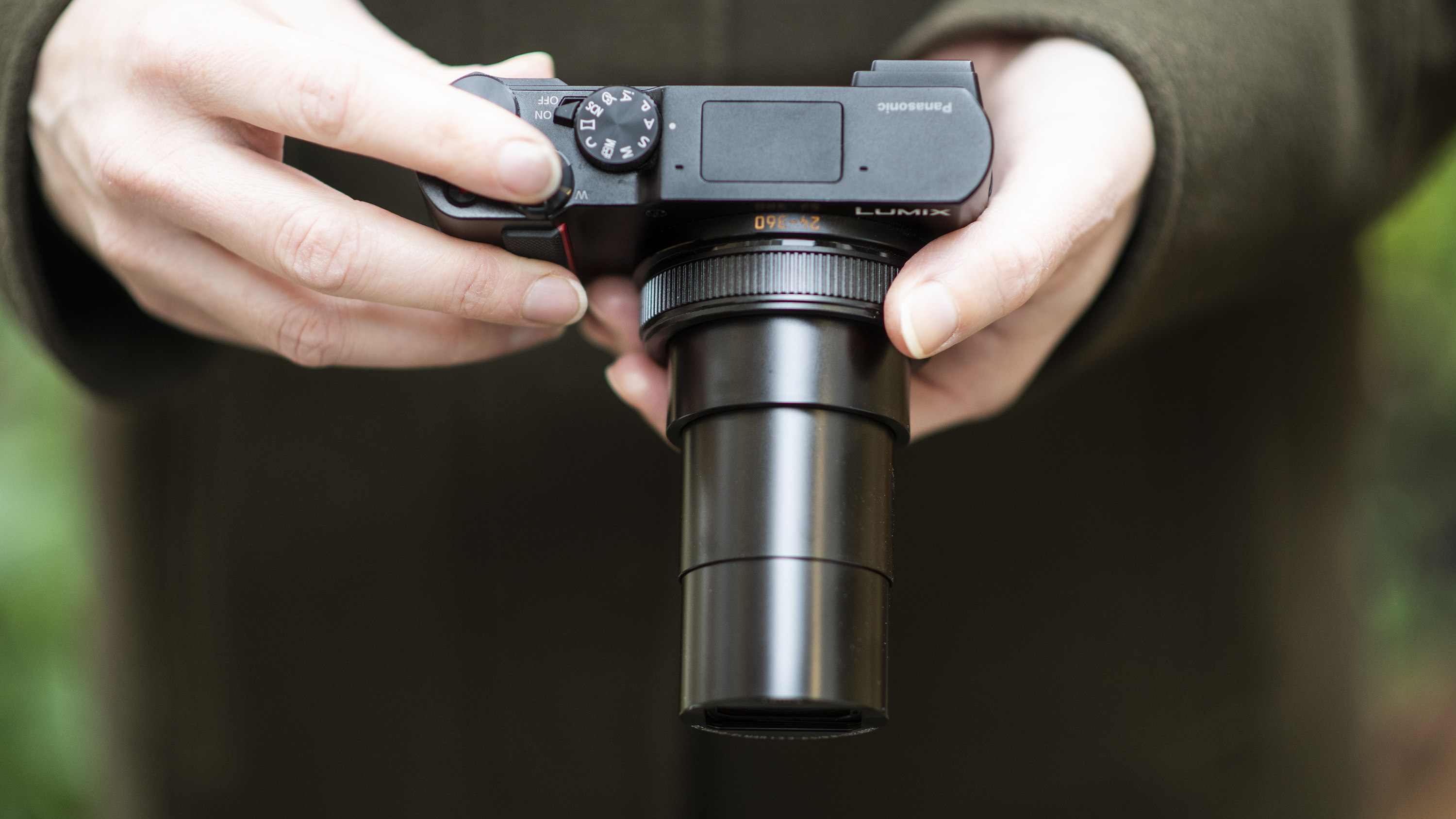
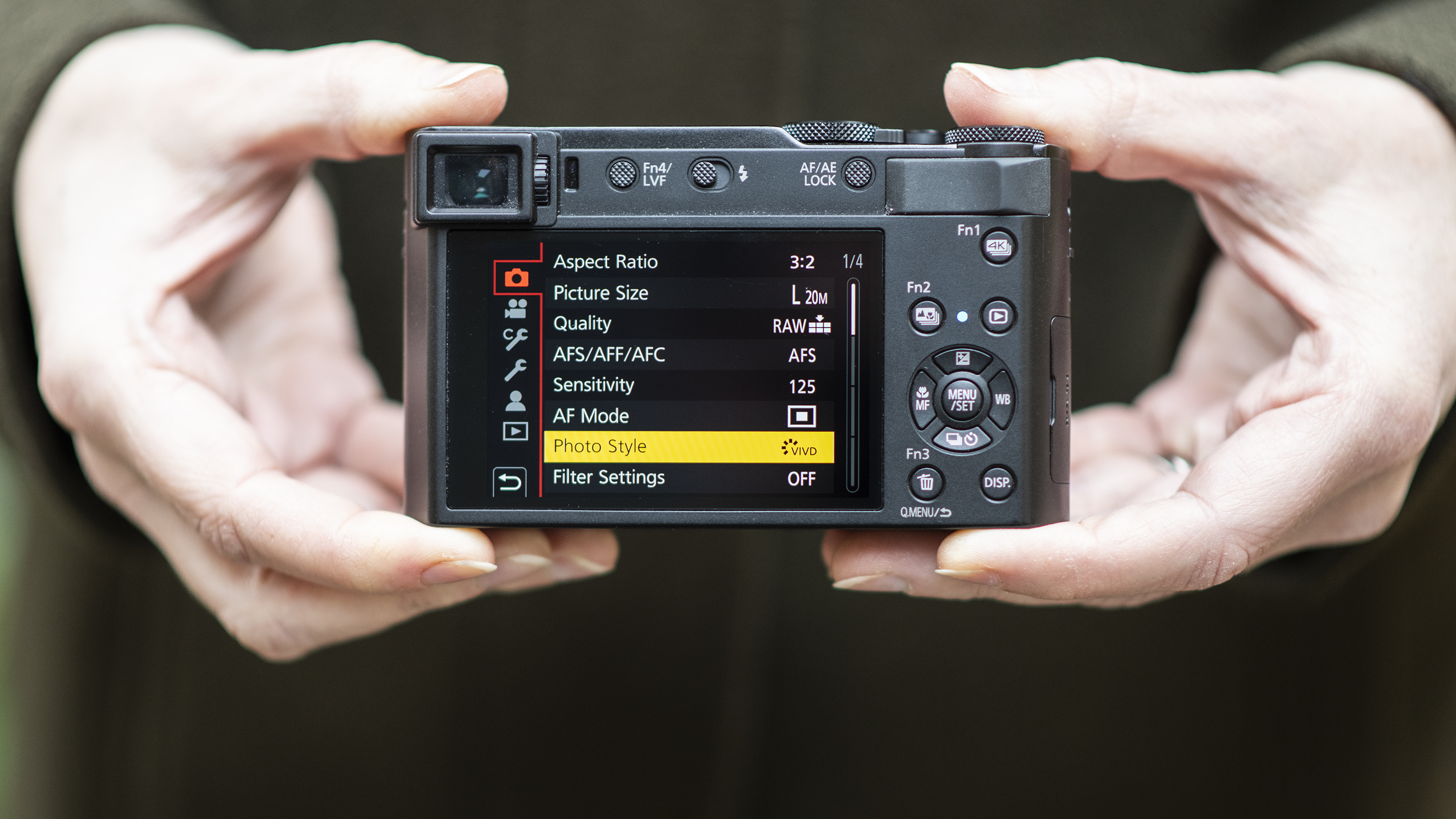
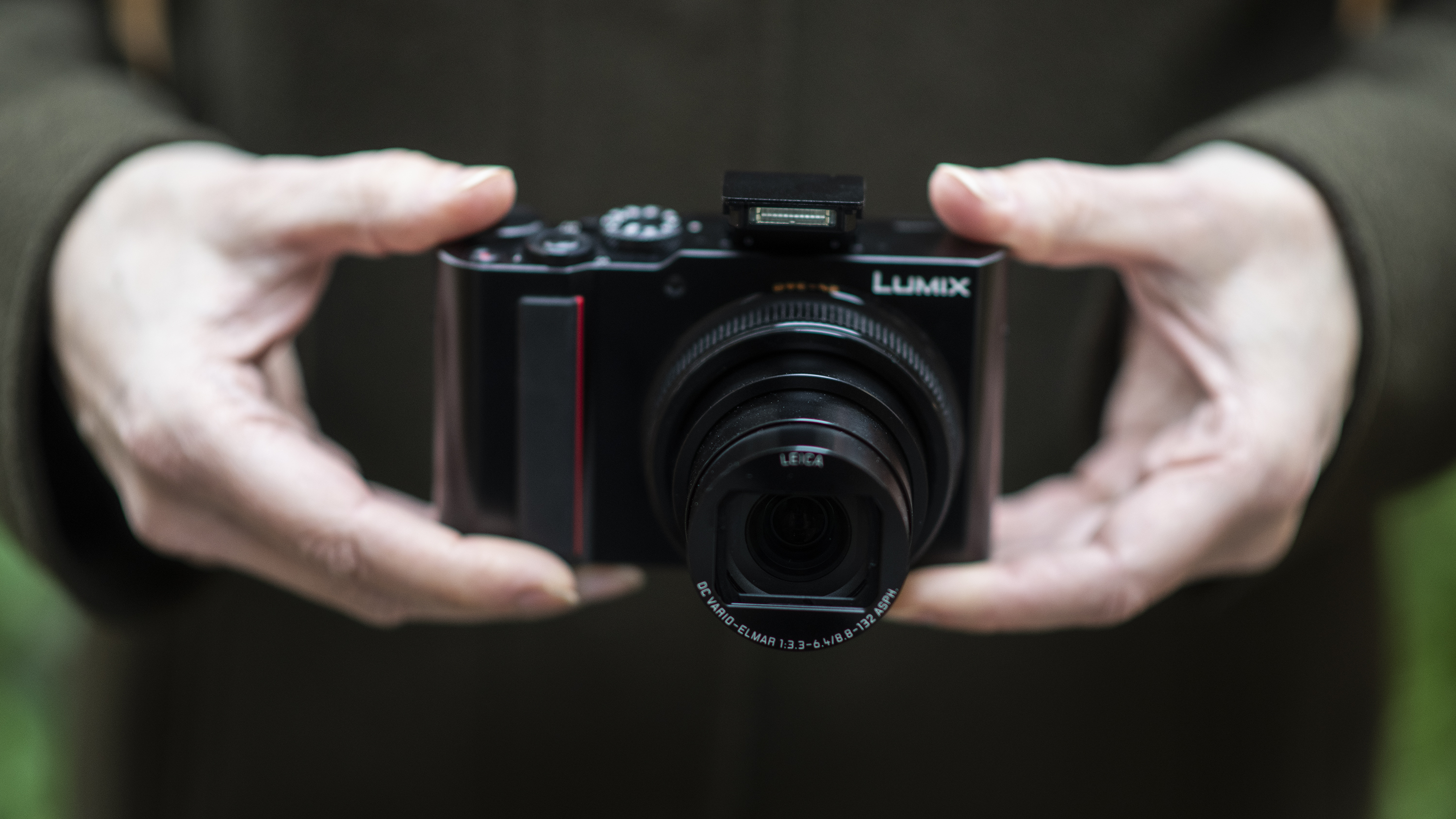
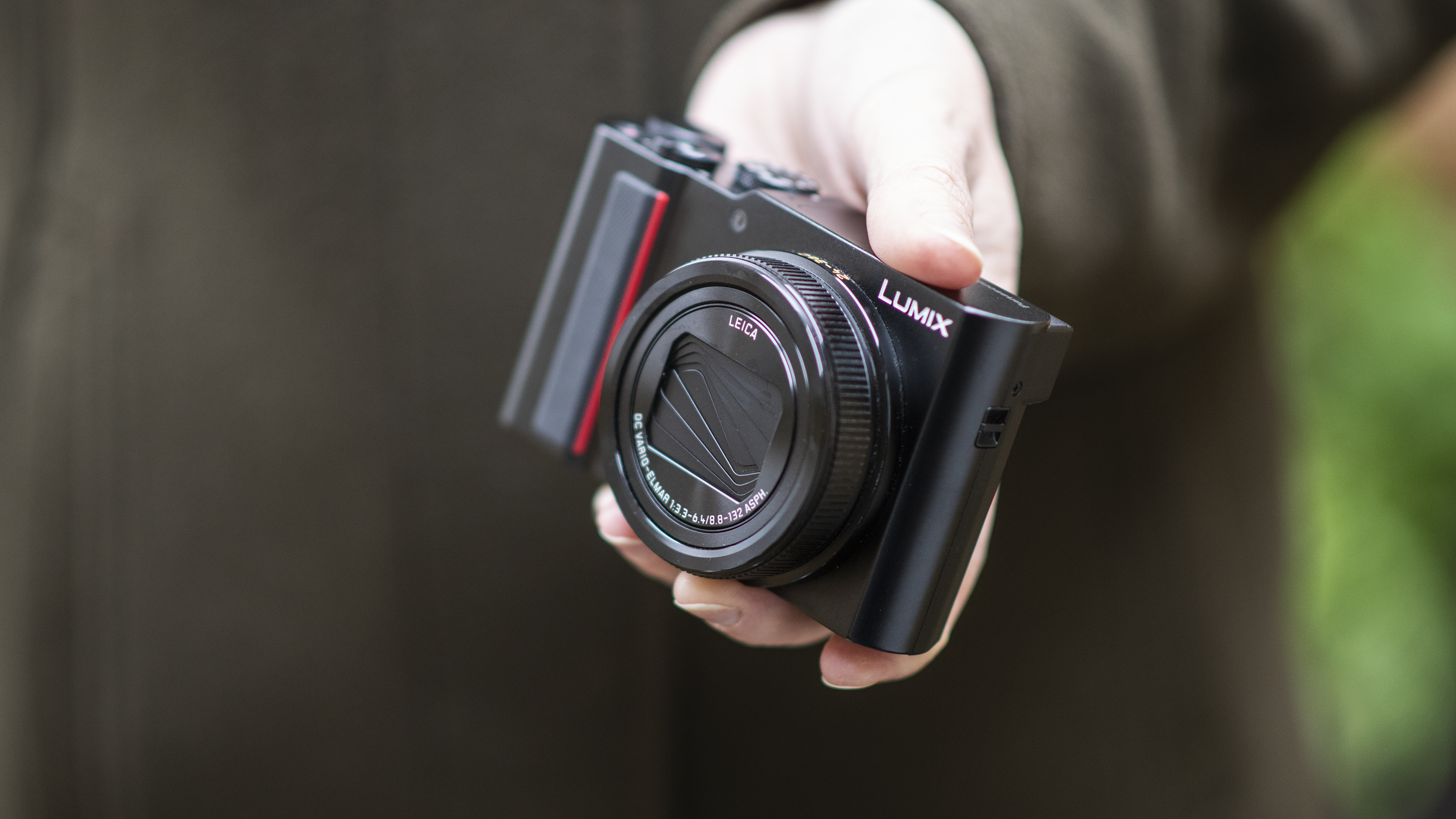
Who’s it for and should I buy it?
The Panasonic Lumix ZS200 / TZ200 is a great option if you're looking for a compact all-in-one camera that you can take on your travels. The large 1.0-inch sensor delivers great results, while the 15x zoom range means you should be able to shoot anything from landscapes and architecture to tight portraits and details.
It's easy to use, but there are also plenty of manual controls should you want to get a bit more creative, while the compact metal body shouldn't weigh you down.
If the 15x zoom isn't quite the deal-breaker, then take a look at the older Lumix ZS100 / TZ100. It delivers similar image quality, the 10x zoom still offers plenty of versatility and it's that bit more affordable. But if you want the ultimate travel compact camera, the Lumix ZS200 / TZ200 ticks pretty much every box.
Panasonic Lumix ZS200 / TZ200 price
- Current price: £729 / $799.99 / AU$1,199
The Lumix ZS200 / TZ200 is unique among travel compacts
- Light Speed AF delivers snappy focusing
- 15x optical zoom is incredibly versatile
- Electronic viewfinder is a nice addition
Sensor: 1.0-inch, 20.1MP
Lens: 24-360mm, f/3.3-6.4
Screen: 3.0-inch, 1,240K dots
Viewfinder: EVF
Continuous shooting: 10fps
Movies: 4K
Battery life: 350 shots
User level: Beginner/intermediate
While Panasonic managed to squeeze a 10x optical zoom into the Lumix ZS100 / TZ100, with a range of 25-250mm and a maximum available aperture of f/2.8-5.9, the Lumix ZS200 / TZ200 incorporates a 15x optical zoom with a coverage of 24-360mm and a maximum aperture of f/3.3-6.4; a touch wider at the start of the zoom range then (although with a slightly narrower/slower maximum aperture), but noticeably more reach at the long end. The new lens design also enables the Lumix ZS200 / TZ200 to focus down to 3cm to enable the capture of close-up macro shots.
With such a large 15x zoom comes the risk of camera shake ruining shots, so Panasonic's Power OIS stabilization system is on hand to counteract unwanted movement for stills photography, and there's five-axis hybrid OIS stabilization for video.
What made the Lumix ZS100 / TZ100 unique among travel zoom compacts was its relatively large 1.0-inch sensor, and the Lumix ZS200 / TZ200 features a similar 20.1MP 1-inch sensor offering an ISO range from 125-12,800 (expandable to 80-25,600).
The Lumix ZS200 / TZ200 boasts Panasonic's Light Speed AF technology, and we found focus speeds to be pretty snappy throughout the zoom range in good light; the AF system will struggle when light levels are really poor, but this isn't unique to the Lumix ZS200 / TZ200. The camera isn't really suited to fast-paced action, but the Lumix ZS200 / TZ200's focus tracking will do a solid job for general subjects.
These improvements to the EVF make framing shots in bright light that much easier, but it's still pretty cramped, and you'll be better served using the rear display in most situations
As well as a rear 3.0-inch touchscreen display, which has a decent resolution of 1,240,000 dots, there's also a small built-in electronic viewfinder (EVF) on the Lumix ZS200 / TZ200.
Compared to the EVF found on the Lumix ZS100 / TZ100, the newer model gets a decent boost in resolution, from 1.17m dots to an impressive 2.3m. It's also a little larger at 0.21 inches (compared to 0.2 inches on the older model), and offers slightly better magnification, at 0.53x compared to 0.45x.
These improvements make framing shots in bright ambient light that much easier, but it's still pretty cramped, and you'll be better served using the rear display in most shooting situations.
The battery in the Lumix ZS200 / TZ200 / TZ220 is rated for 350 shots, or 300 if you use the EVF. The camera also features a new eco30fps mode, which reduces the Live View refresh rate and which should see the camera good for around 370 shots (if you're using the rear LCD) per charge. The battery can be charged via AC or USB, although if you're not going to be near a power supply for a while, you might want to invest in a second battery.
Finally, there's a Bluetooth Low Energy connection to enable a consistent connection with a smartphone or tablet with minimum power consumption, alongside the usual Wi-Fi connectivity, which allows for quick transfer of images.
Sleek design is a subtle improvement on predecessor
- Both auto and manual controls
- Solid metal construction
- Weighs 340g
Despite the extra reach of its lens over the Lumix ZS100 / TZ100, the Lumix ZS200 / TZ200 is hardly any bigger. In fact, it's only 1mm wider at 112mm, 1mm thicker at 45mm and 2mm taller at 66mm; that's pretty impressive considering the 15x zoom and 1-inch sensor it packs into its body.
While it's probably a bit too big to slip into a jeans pocket comfortably (although you could probably cram it in at a push), it'll hardly take up any space in a day bag, while the smooth metal exterior finish gives it a premium and durable feel.
A welcome addition over its predecessor is the addition of a modest textured grip on the front of the camera
The sleek design follows on from the Lumix ZS100 / TZ100, but a welcome addition over that camera is a slightly textured grip on the front of the camera to give you a bit more of a reassuring hold – we still reckon the supplied wrist strap is worth using for the extra security though.
The controls on the Lumix ZS200 / TZ200 are pretty straightforward, and are grouped in such a way that you can use the camera one-handed if you wish. There's a dedicated mode dial on the top (there are a selection of automated modes, along with more advanced program, aperture priority, shutter priority and manual options), and there's an additional dial that offers control over different functions depending on the shooting mode you're in; if you're working in aperture priority mode, for example, you can use it to alter the aperture, while it can also be used for toggling exposure compensation.
The controls on the rear of the camera are clearly marked, while the Fn3 button provides access the Lumix ZS200 / TZ200's quick menu, enabling you to adjust common settings such as ISO, metering and white balance without the need to dive into the main menu. The speed of adjustment is helped by the Lumix ZS200 / TZ200's touchscreen interface, as you can tap your desired setting on-screen rather than having to physically select it.
The control ring around the lens facilitates quick adjustments to a variety of settings, depending on the mode you're in. For instance, if you're in aperture priority mode its default setting is to control the lens aperture. If you prefer, though, you can set it to control other settings, including zoom, exposure compensation and white balance.
Image quality
- Lumix ZS200 / TZ200 delivers nicely detailed images
- Good dynamic range
- ISO125-12,800 (expandable to 80-25,600)
As we've seen with other cameras that feature a 20.1MP 1.0-inch sensor, the Lumix ZS200 / TZ200 is capable of delivering nicely detailed shots which have a natural, yet bright and vibrant look; if you're going to be printing images at A4 or below these certainly stand up very well compared to cameras that enjoy larger sensors.
When it comes to image noise (the grain-like effect that encroaches on images as you increase the ISO), the Lumix ZS200 / TZ200 performs very well for a travel zoom compact. At lower sensitivities images (both JPEG and raw) handle noise well, but inevitably the quality of JPEGs in particular suffers as you boost the ISO.
If you're shooting JPEGs, be prepared for images to display signs of detail smoothing as the camera tries to reduce the effects of noise. Raw files are a lot more pleasing at higher sensitivities – while image noise is present, more detail is retained, and you'll ultimately get a better result if you're prepared to process your images once you're back home.

Click here to see the full-size image

Click here to see the full-size image

Click here to see the full-size image

Click here to see the full-size image
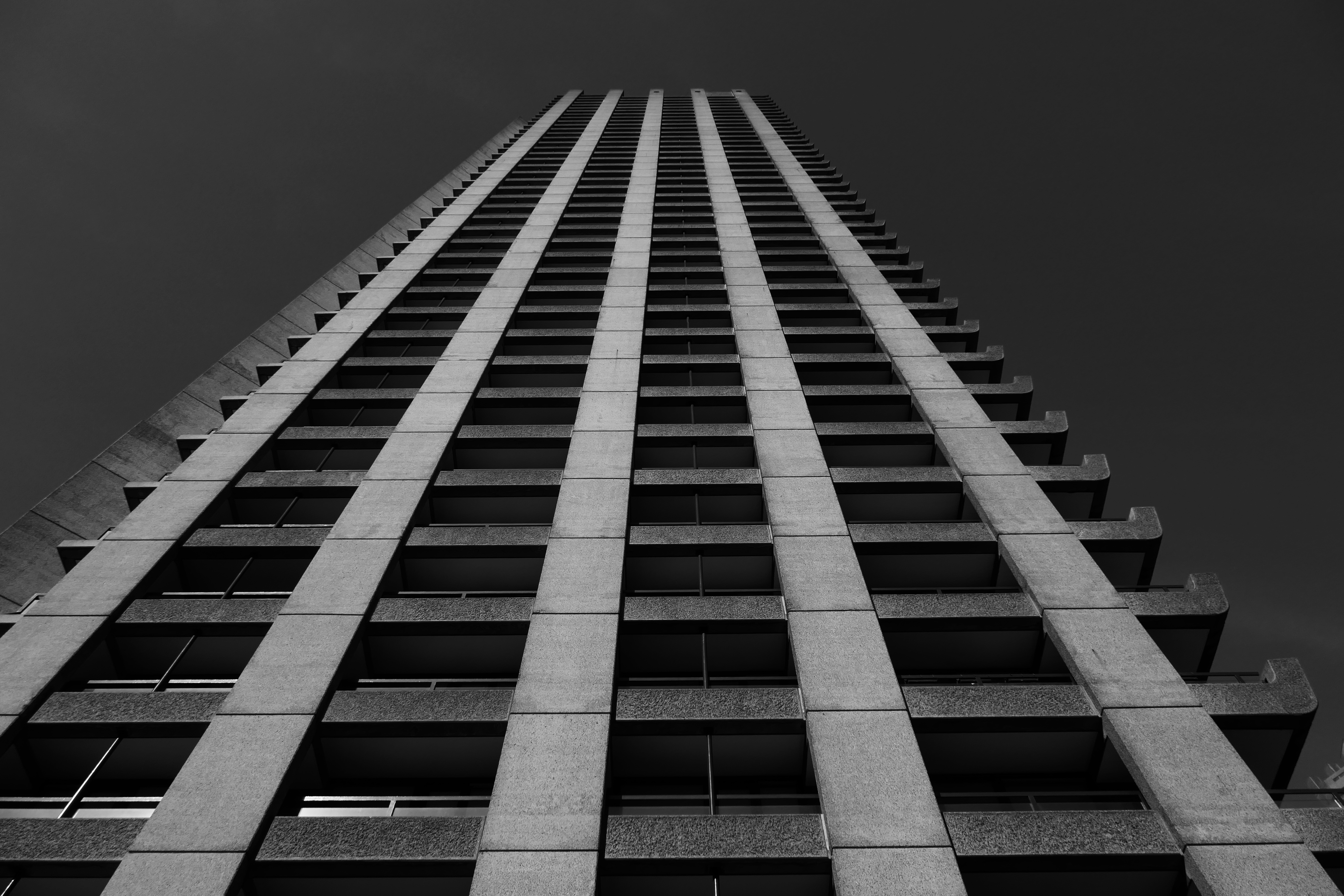
Click here to see the full-size image

Click here to see the full-size image

Click here to see the full-size image
If you're traveling, chances are you're going to be shooting in some pretty high-contrast conditions (bright sunlight and shade for example). This can cause cameras to struggle, either producing images that are too dark or too light, as the sensor doesn't have the dynamic range to cope with the wide tonal range.
While it's possible to recover some lost detail with JPEG files, the ability to capture raw files with the Lumix ZS200 / TZ200 means that at lower ISOs you can claw back a good deal of detail in the shadows for a much more pleasing final image; try and avoid shooting at higher ISOs if you intend to do this, though, as you don't get quite the same flexibility.
Lens performance is good considering that Panasonic has managed to squeeze a 15x optic into such a compact body. Sharpness does suffer a little at the long end of the range, but vignetting and distortions are well controlled at the wider end.
Not convinced? Try these...
If the Lumix ZS200 / TZ200 isn’t for you, we’ve picked three excellent alternatives for you to consider.
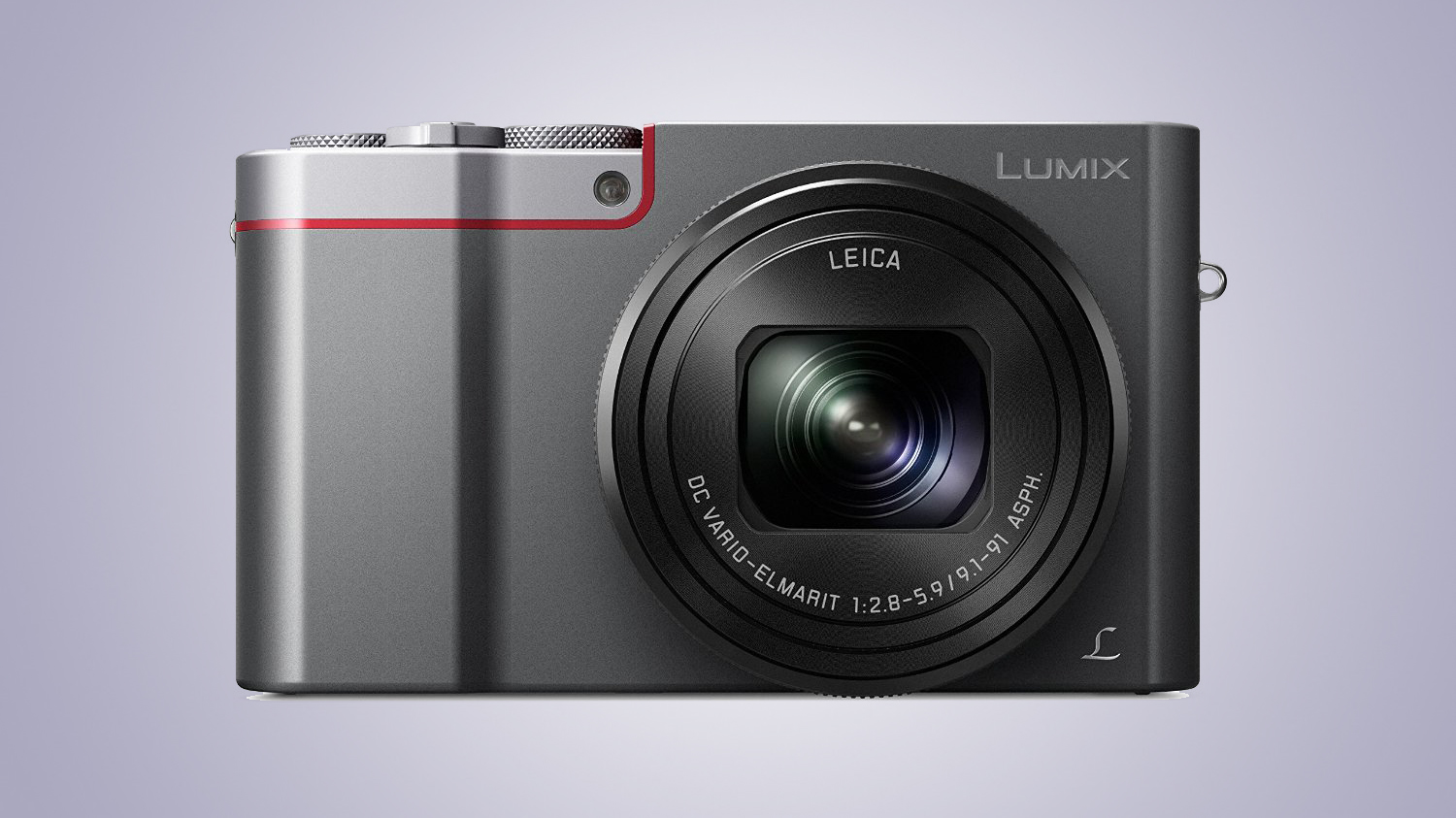
Panasonic Lumix ZS100 / TZ100
Like the idea of a 1-inch-sensor travel zoom compact but can't stretch to the Lumix ZS200 / TZ200? The Lumix ZS100 (known as the TZ100 outside the US) is a great option despite being superseded by the Lumix ZS200 / TZ200. The 10x optical zoom isn't quite as broad but it still offers a decent reach, while image quality is very good.
Read our in-depth Panasonic Lumix ZS100 / TZ100 review
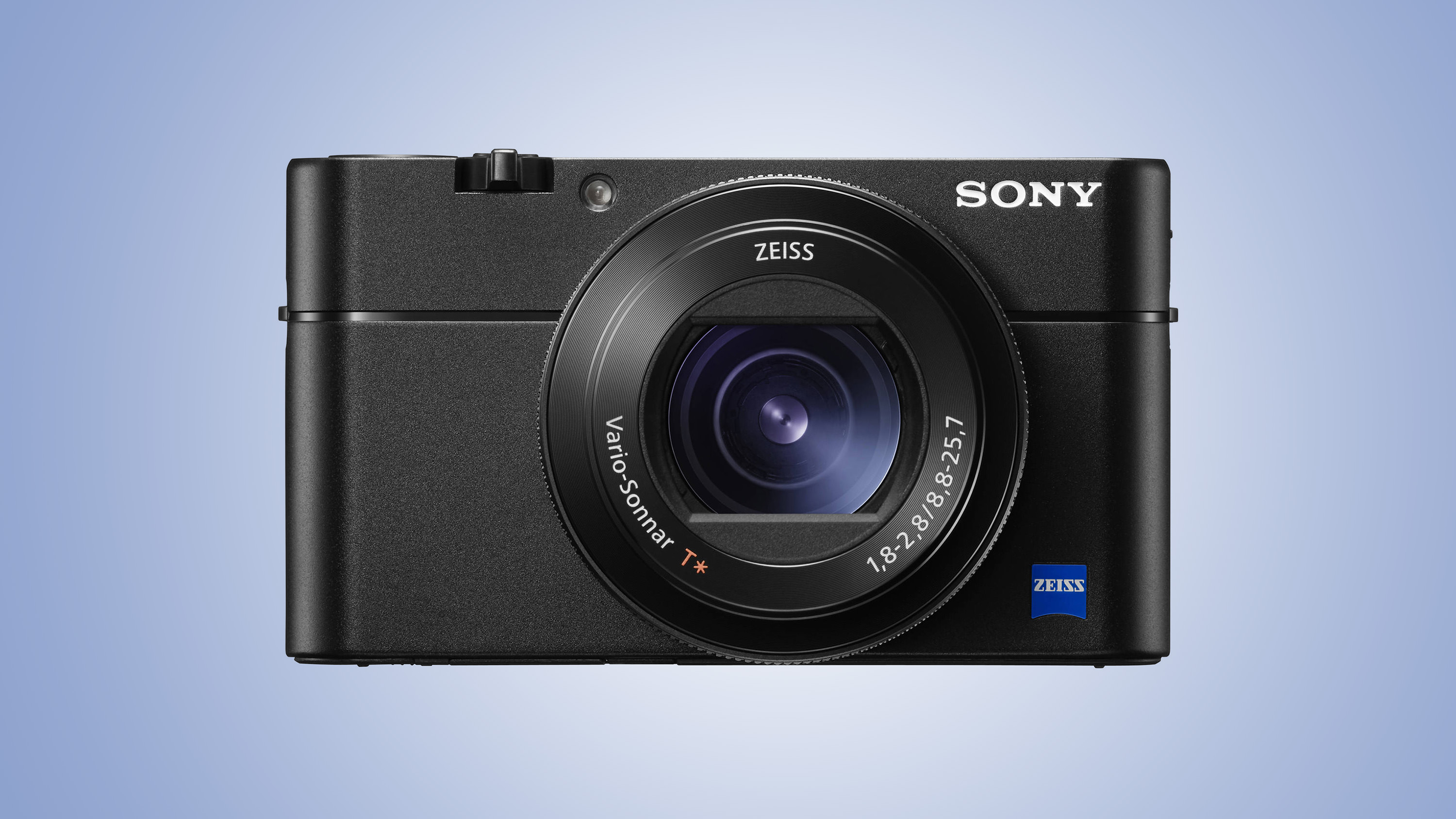
Sony Cyber-shot RX100 V
While not offering anywhere near the zoom range of the Lumix ZS200 / TZ200, the RX100 V is still one of our favorite compact cameras. The zoom range is modest, but it has a fast maximum aperture of f/1.8-2.8, while the performance and AF are excellent. There's also a brilliant pop-up EVF. Pricey but brilliant.
Read our in-depth Sony Cyber-shot RX100 V review
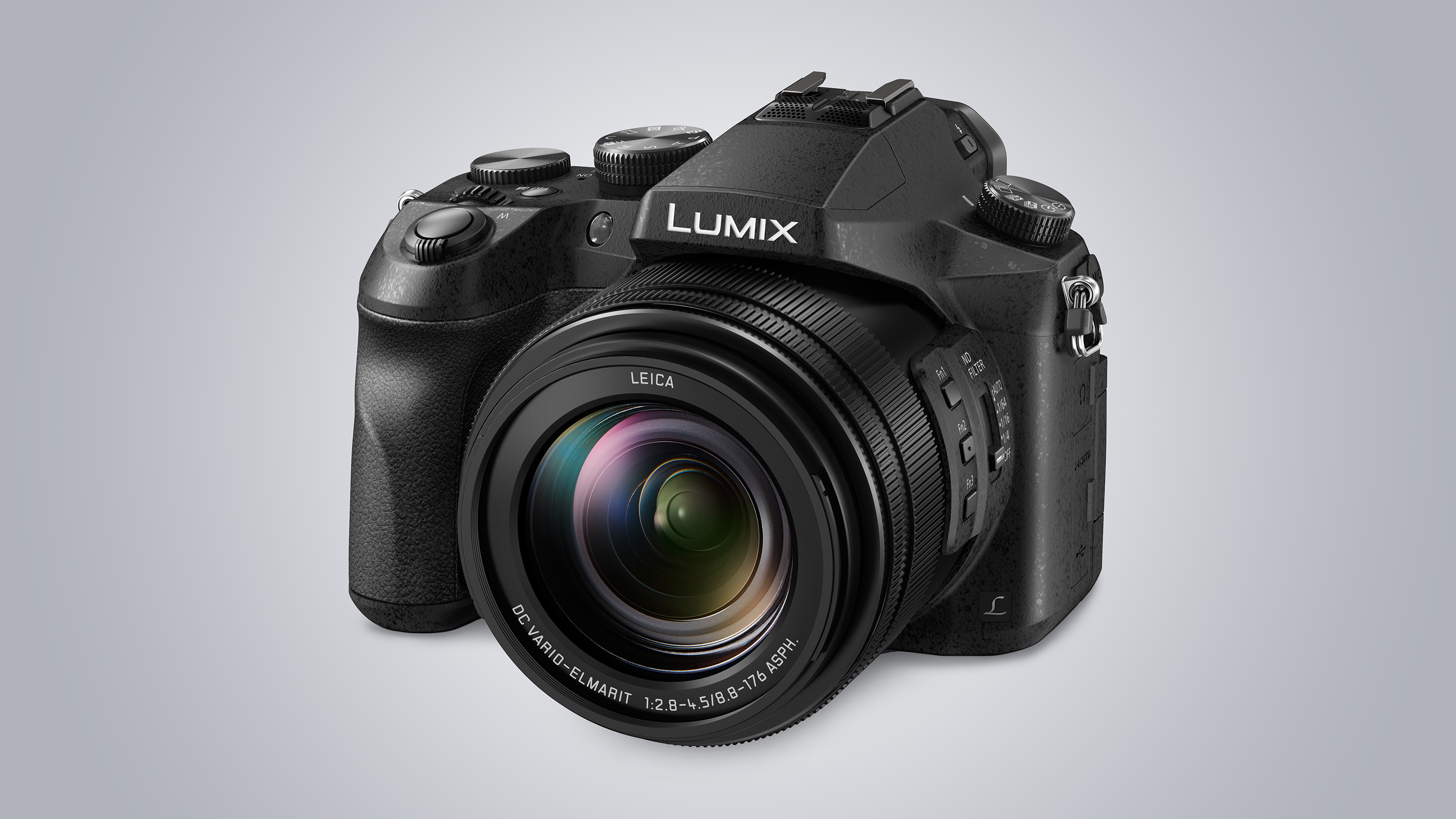
Panasonic Lumix FZ2000 / FZ2500
Like the idea of an all-in-one camera, but want a bigger zoom? While there are plenty of other compacts out there that offer this, they have smaller sensors. The Panasonic Lumix FZ2000 (known as the FZ2500 in the US) is a bridge compact, so it's slightly chunkier proposition, but it uses a similar 1-inch sensor to the Lumix ZS200 / TZ200, and offers a bigger and faster zoom that tops out at 480mm.
Read our in-depth Panasonic Lumix FZ2000 / FZ2500 review
Phil Hall is an experienced writer and editor having worked on some of the largest photography magazines in the UK, and now edit the photography channel of TechRadar, the UK's biggest tech website and one of the largest in the world. He has also worked on numerous commercial projects, including working with manufacturers like Nikon and Fujifilm on bespoke printed and online camera guides, as well as writing technique blogs and copy for the John Lewis Technology guide.
